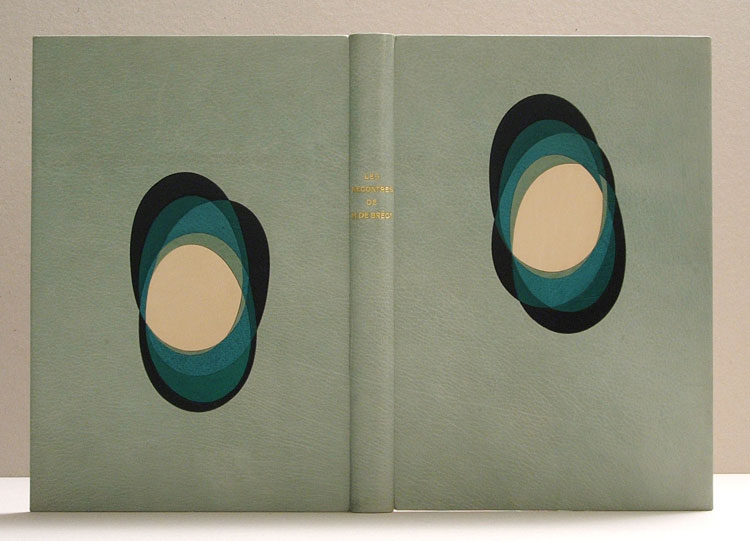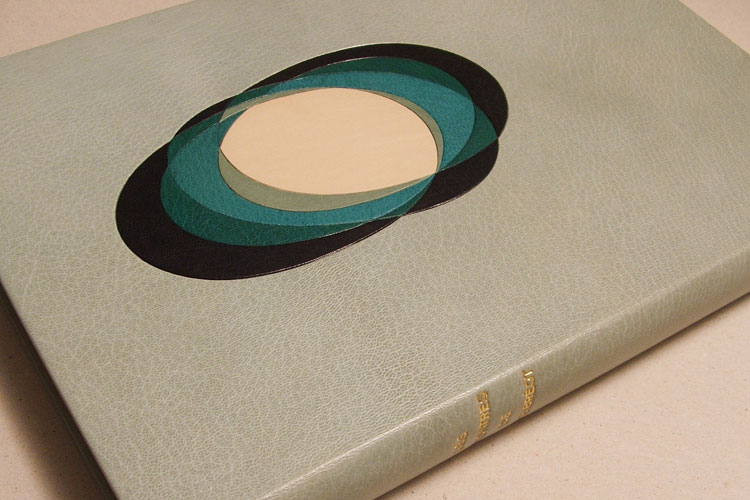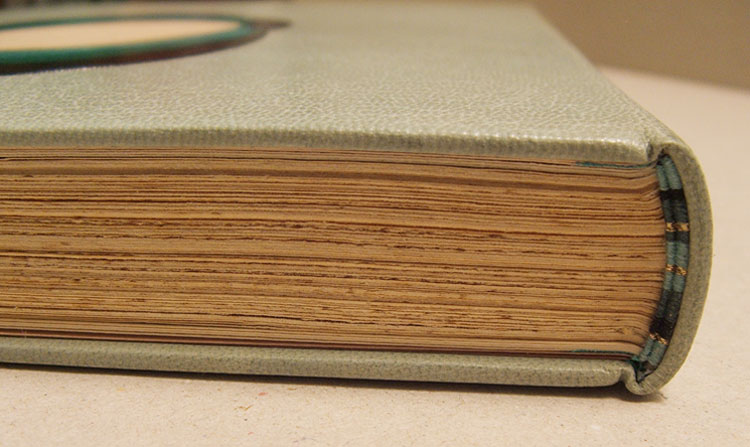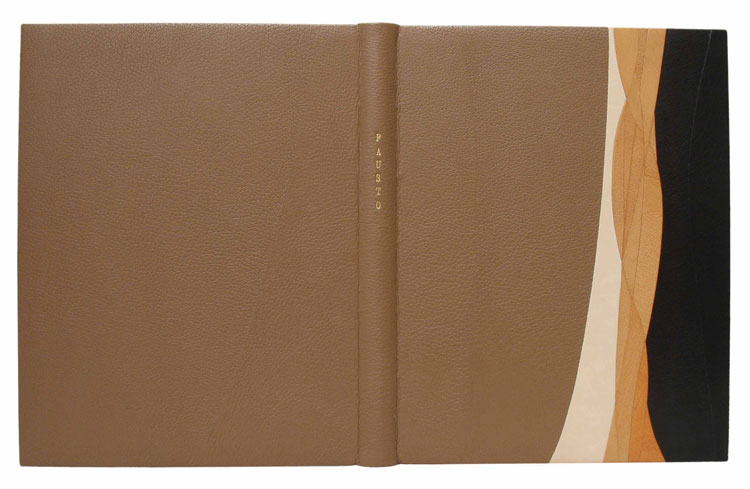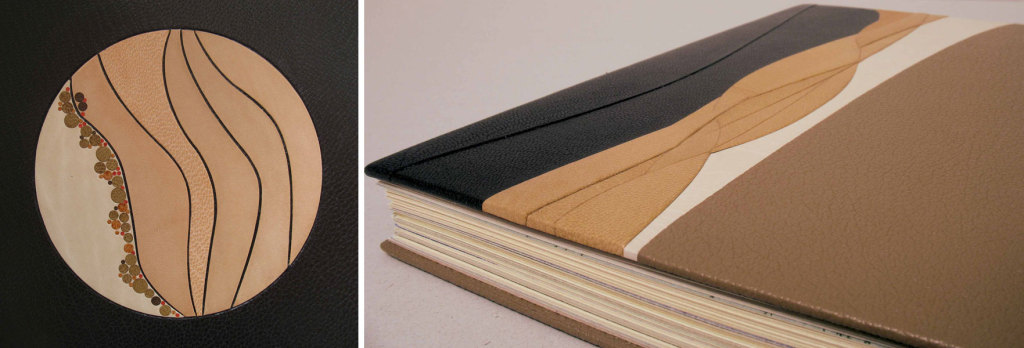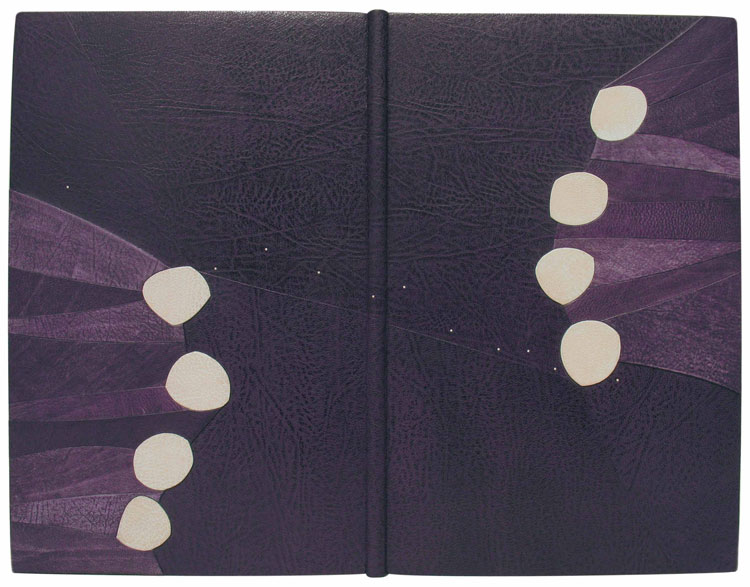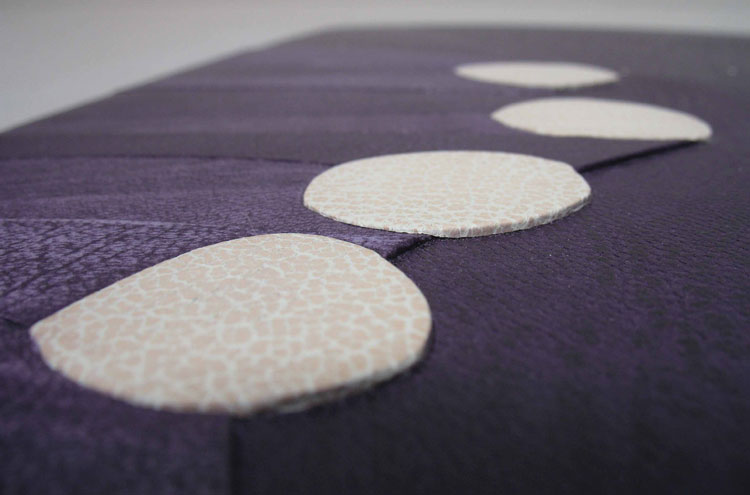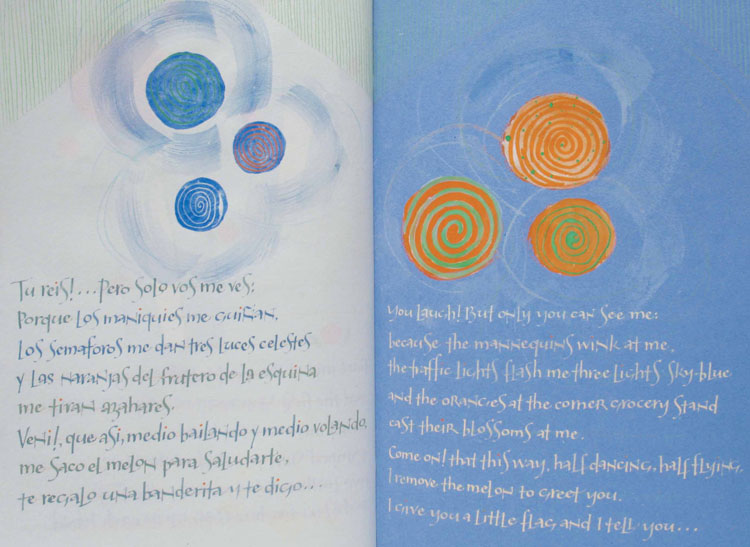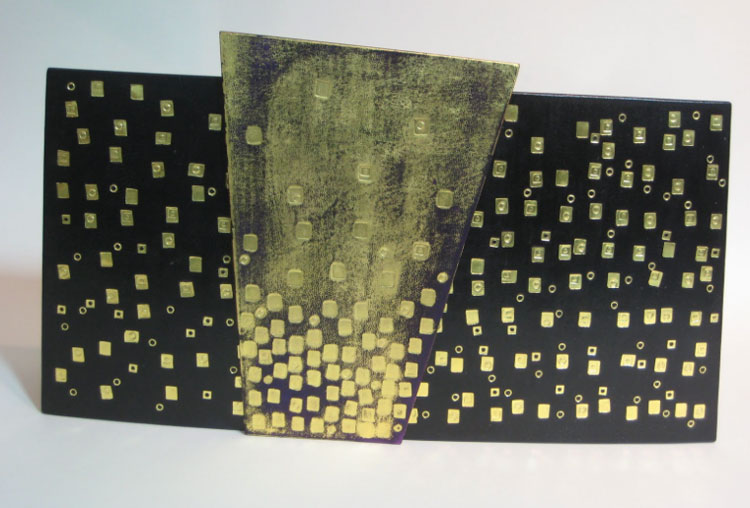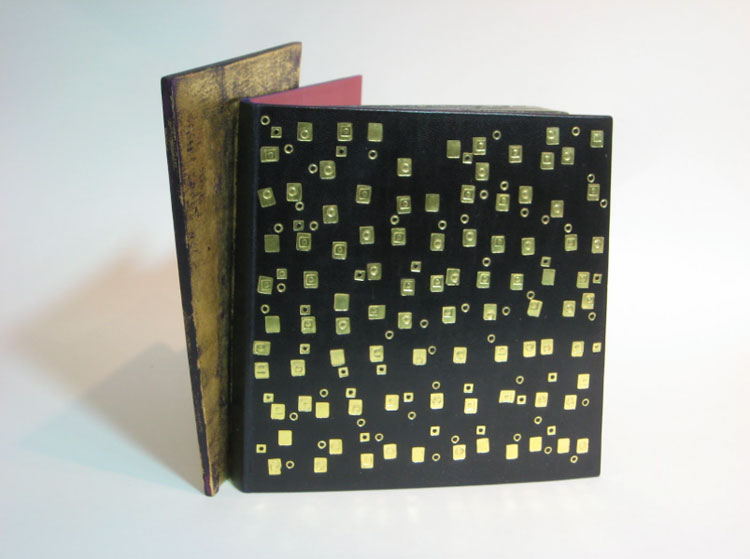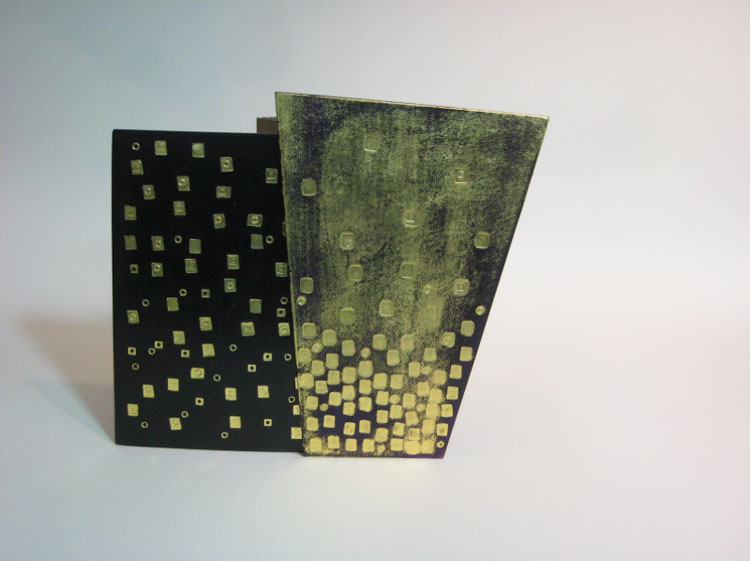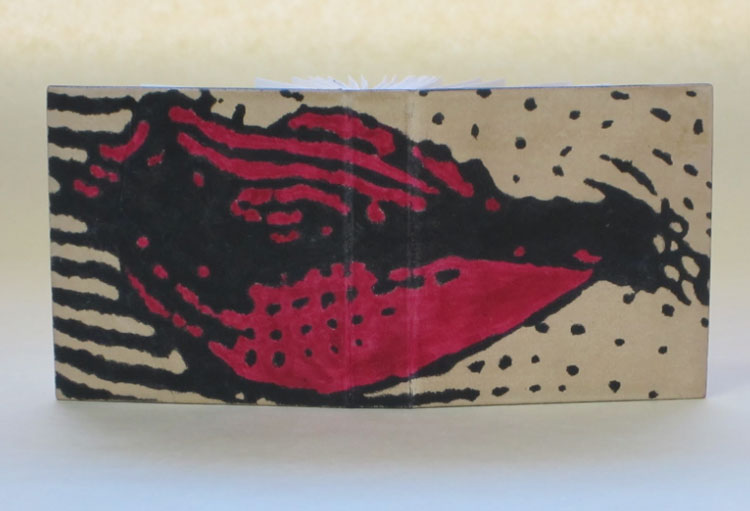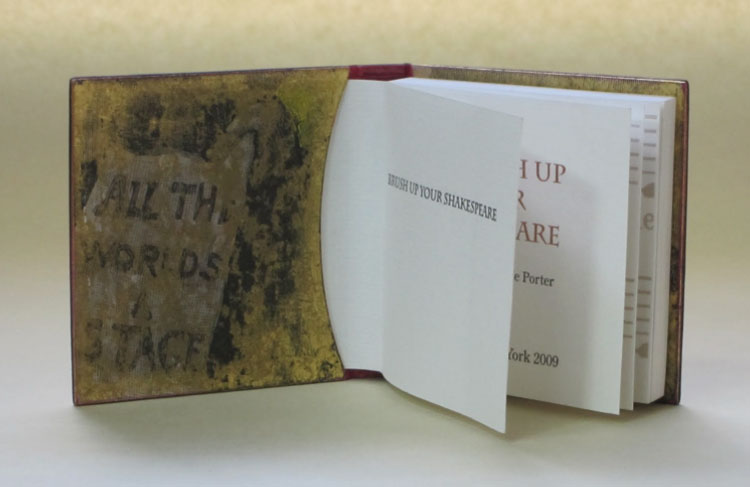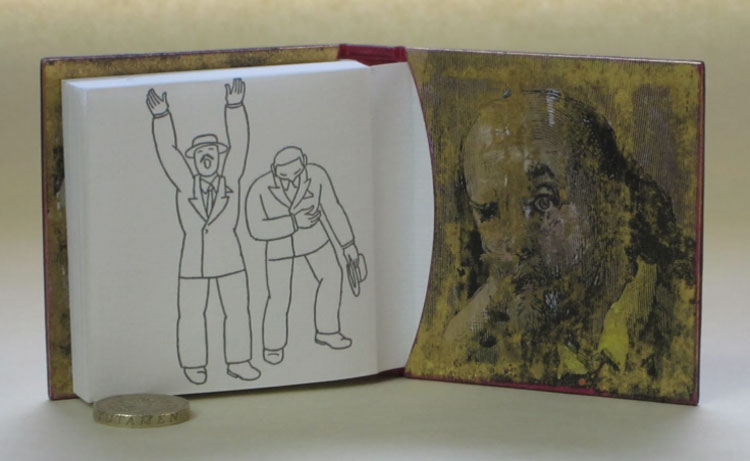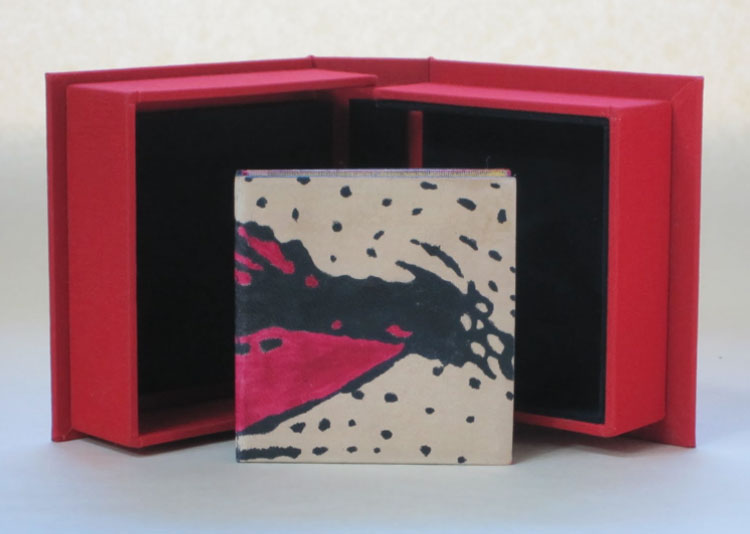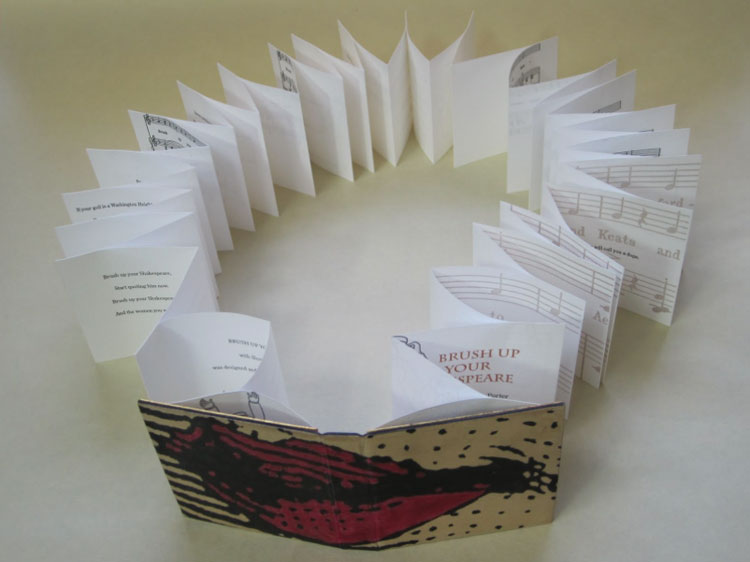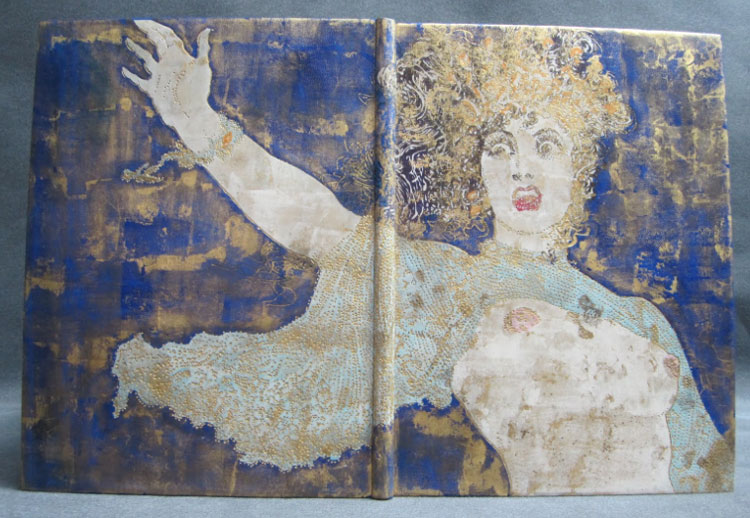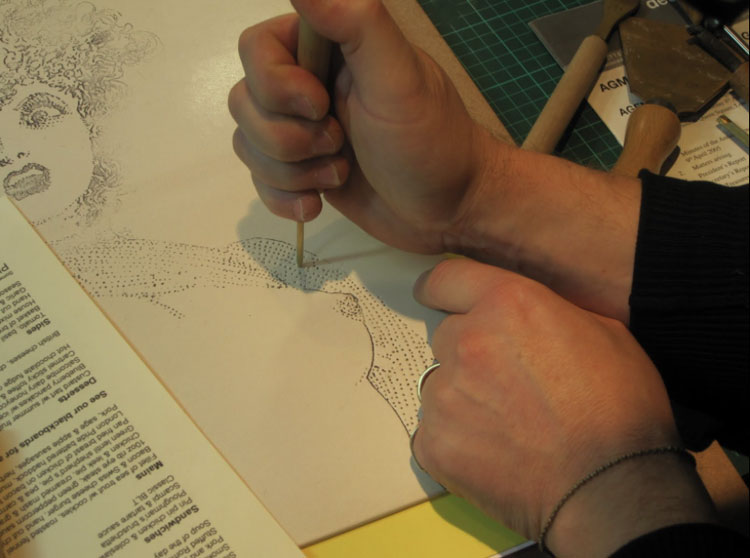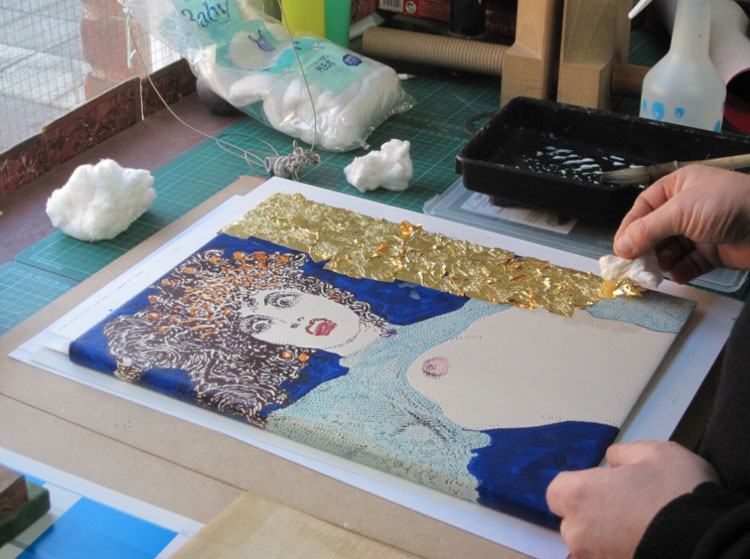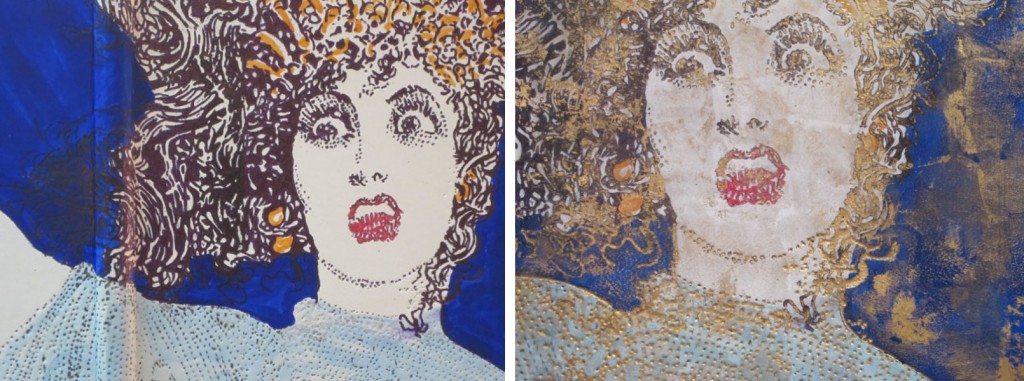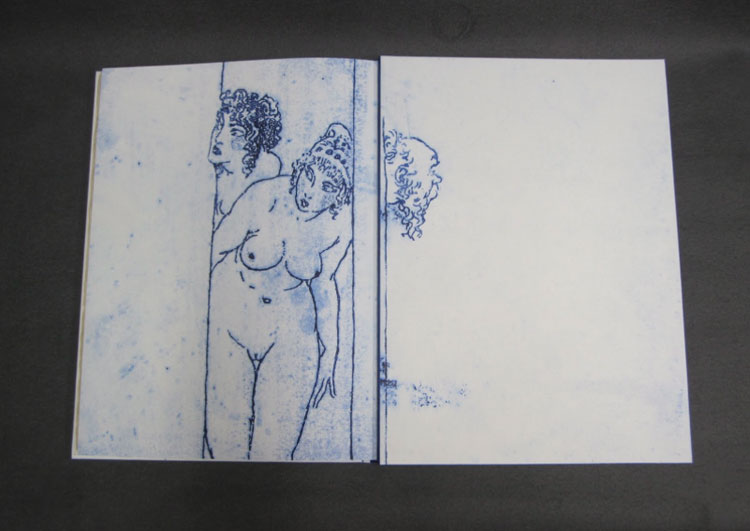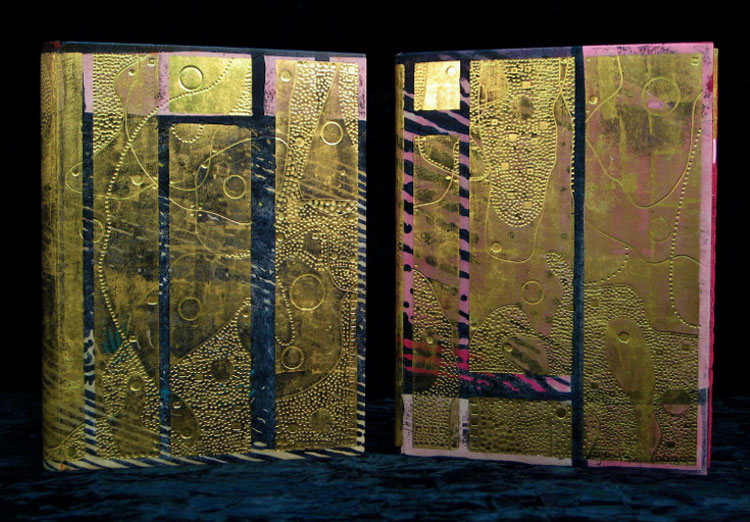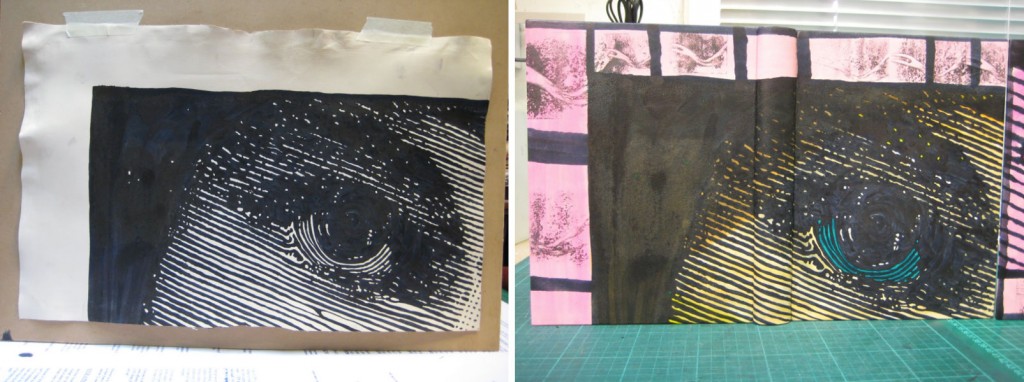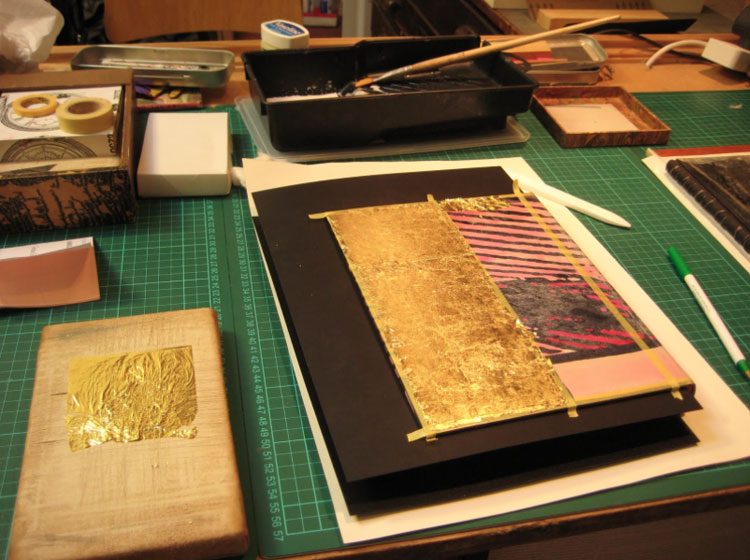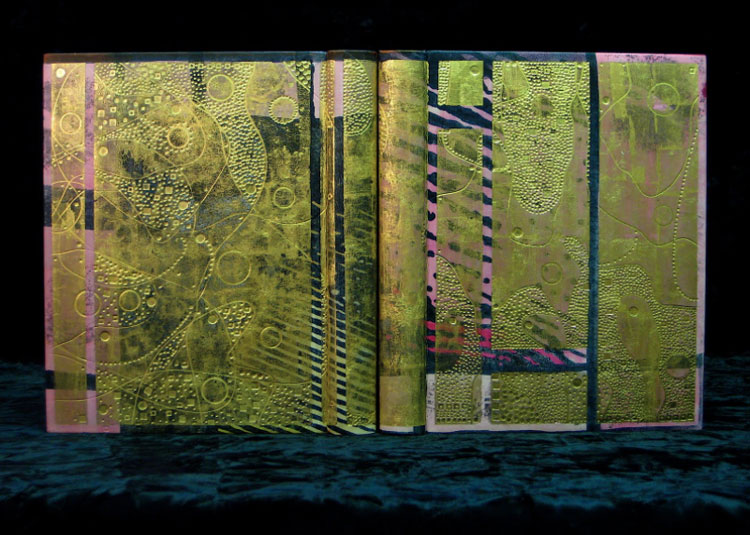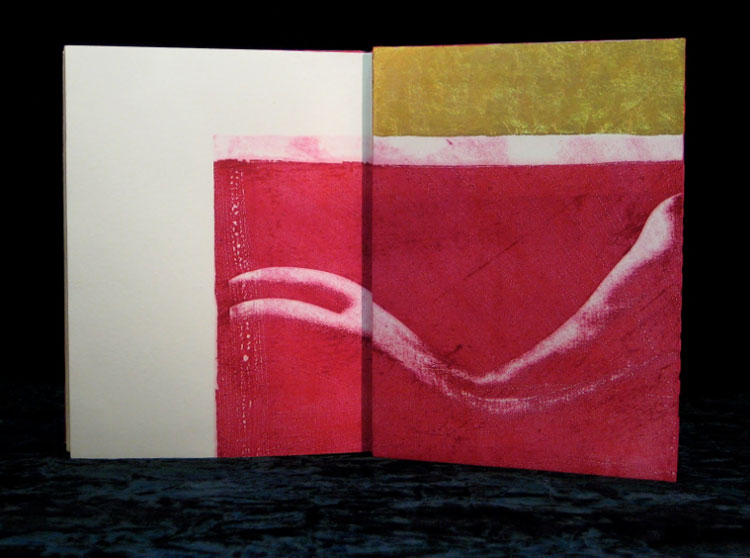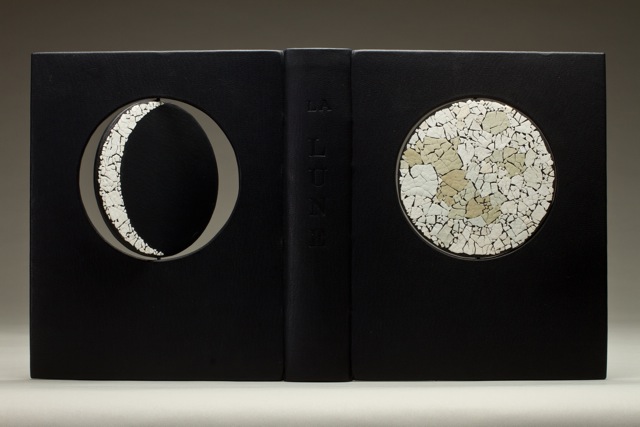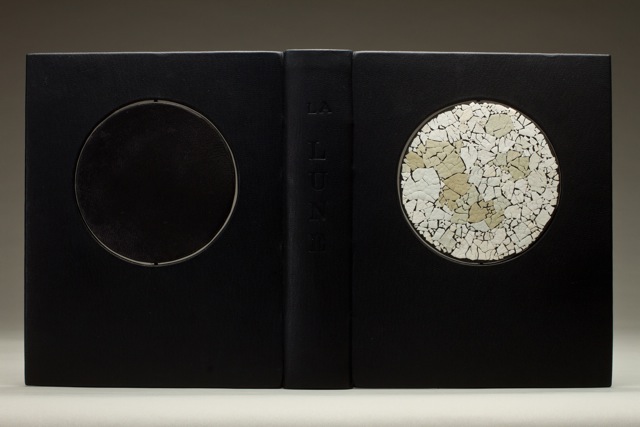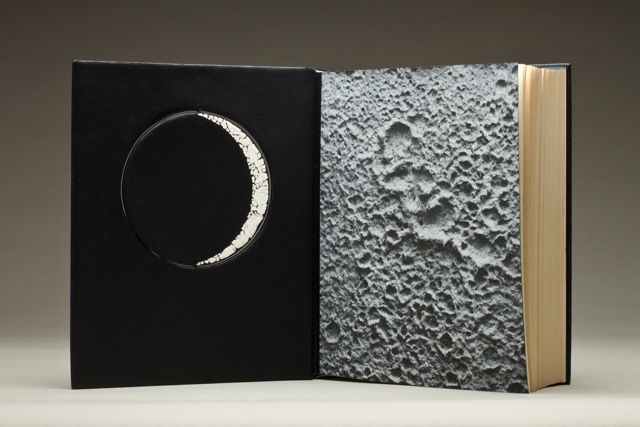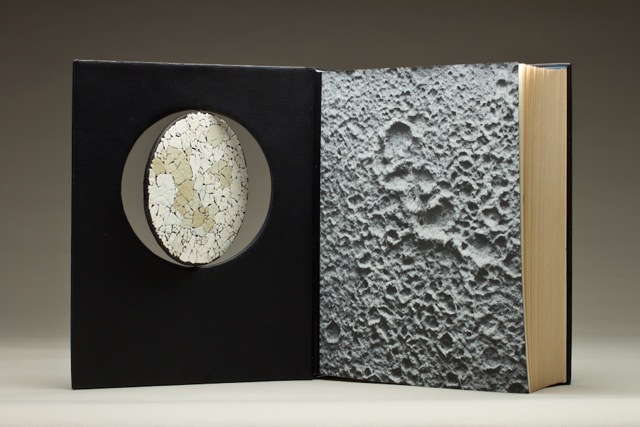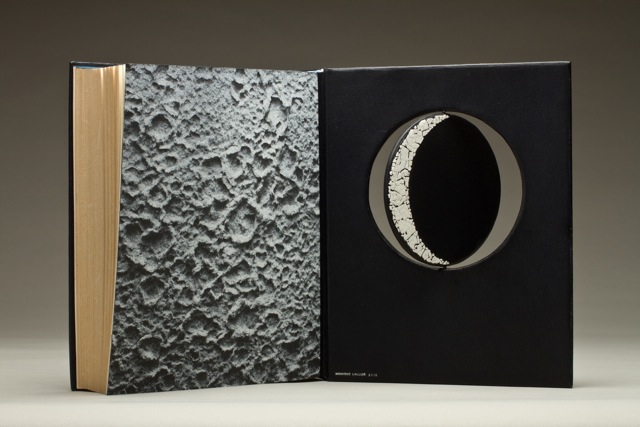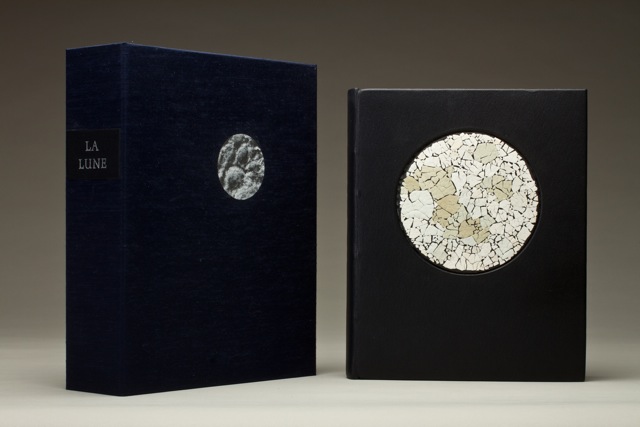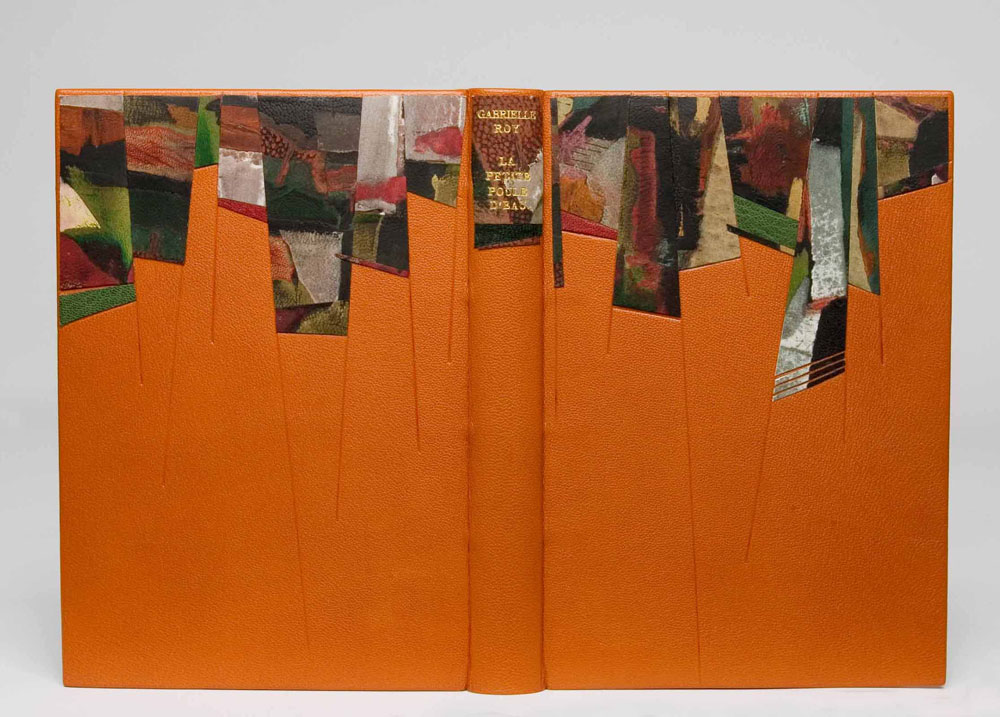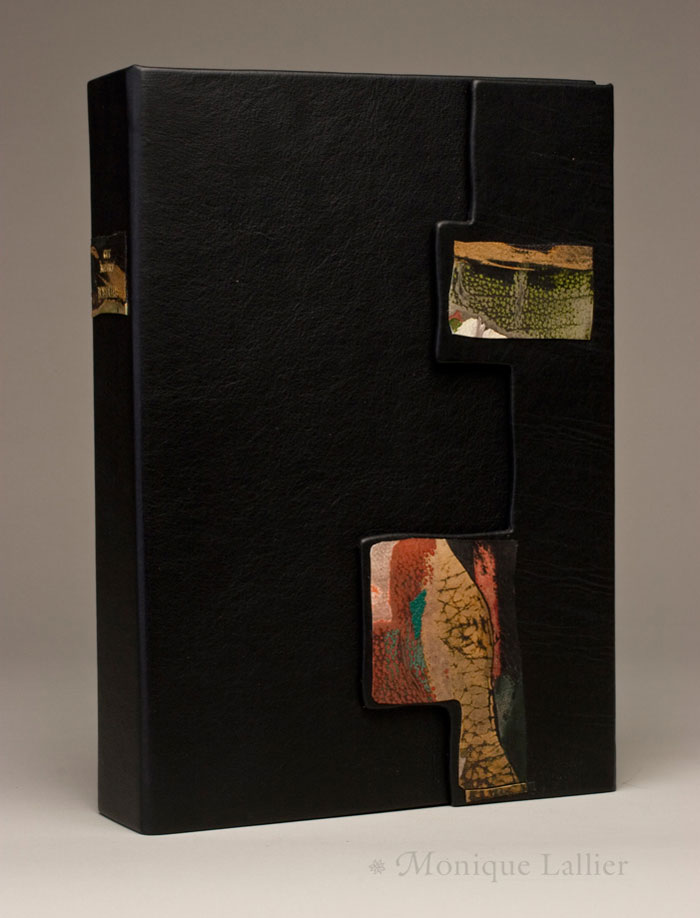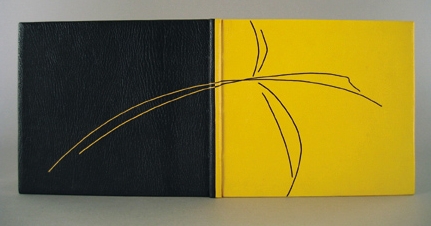This is my favorite binding to date from bookbinder Sol Rébora. A french text bound in full goatskin with onlays that create a striking, eye-catching design. The overlapping ellipses are creating by using a combination of goatskin and calf. Combining these two skins as onlays is a technique Sol has used in other bindings (like this one or this one). I quite love the look of the textured goat against the smooth calf.
The binding was created for Les Rencontres de M. de Bréot, which is a novel written by French author Henri-François-Joseph de Regnier in 1904.
Although it’s hard to choose a favorite, I think this binding might be the one. Did this design stem from a love of 20th century French design binding?
It could be, I bound this book for an Argentinean bookseller. He participates every year in the Antiquarian book fair in Paris and I specially bound this book so that he could show my work at this fair in Paris. It is a French book and so there you have the result.
